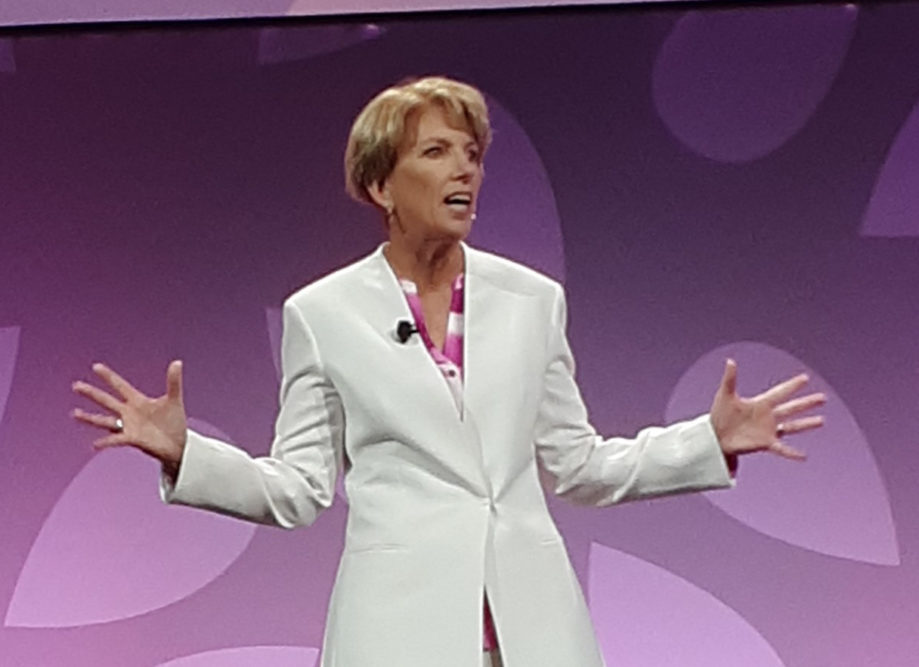ANAHEIM, CALIF. — The current state of the fresh produce industry is a mix of the Good, the Bad and (not the Ugly, or even the Ugli Fruit) the Unknown.
Those were the categories International Fresh Produce Association CEO Cathy Burns used to organize the 2023 version of her State of the Industry speech, delivered Oct. 19 at IFPA’s annual convention.
“The state of the produce industry is good, but it could be better,” Burns said.
On the good side, fresh produce is in a prominent, maybe unique, position to positively influence two of the biggest challenges facing Planet Earth: global warming and obesity.
IFPA and its members, Burns said, have made huge strides toward achieving more climate-friendly agricultural practices, and that work will only intensify. And getting people in the US and throughout the world to eat more fresh fruits and vegetables will save untold billions in health care and related costs.
“The world needs us — more than ever before,” Burns said. “We can help solve some of the biggest problems in the world.”
On the bad side, those problems won’t be easy to fix.
The heat, flooding and other extreme weather events that have dominated headlines in 2023 as never before have taken a huge toll on agriculture and growers’ ability to supply the world with fresh fruits and vegetables.
And further down the supply chain, logistics hiccups and labor shortages often make those challenges even greater.
On the nutrition side, the produce industry continues to scratch its collective head — if not bang it against a wall — over the million-dollar question of why people don’t eat more fresh fruits and vegetables.
“It’s no secret that our greatest hurdle is consumption,” Burns said. “We have seen some areas of growth, but we’re capable of so much more.”
Forty percent of the world’s population is overweight or obese, and Burns said that number hasn’t peaked yet.
And when it comes to promoting solutions, it doesn’t help when organizations like Weight Watchers start recommending weight loss drugs — “doing a 180” from its previous focus on better nutrition, Burns said.
Dominating the “Unknown” section of Burns’s three-part State of the Industry address was AI.
In 2023, she said, AI has gone from “nowhere” to “now here,” and its track record thus far is definitely a mixed bag.
Its growth, however, can’t be denied. In less than two years, companies’ adoptions of AI technologies have grown by 400%. And its increases in operational efficiencies and new revenue are projected to total $113 billion.
“Our opportunity is to work with this technology, not fight it,” Burns said. “Innovation is not the enemy, inertia is.”

